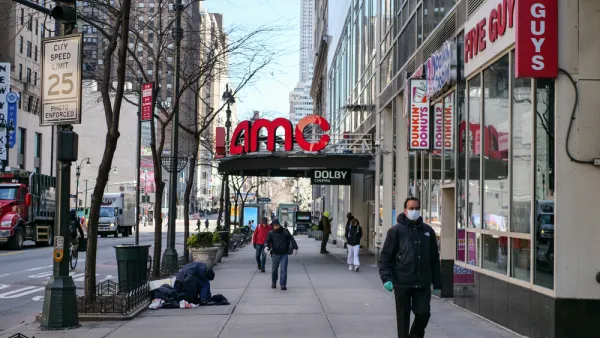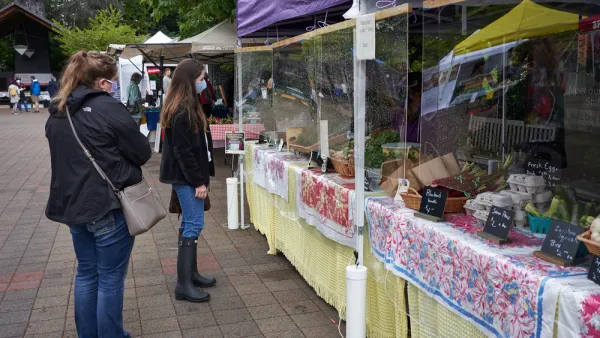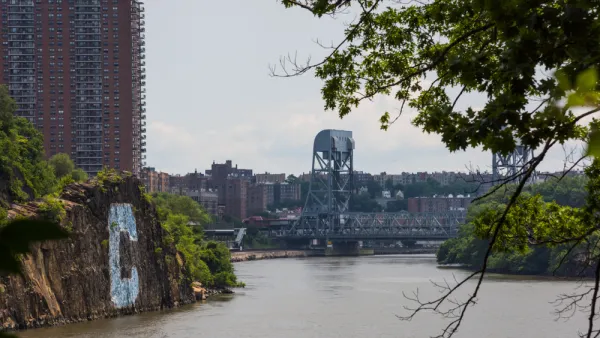Rising rents and competition with chains are taking their toll on Manhattan bodegas, a mainstay for hispanic neighborhoods for their fresh and ethnic foods. As their numbers decline, chain stores increase, and Walk Scores drop.
Bodegas — there are around 12,000 in New York City — cannot be strictly defined," writes Tatiana Schlossberg for The New York Times. "You know one when you see it."
While 75 store closings this year is about .625 percent, a pattern is emerging. They disappear as chain stores open. And when they go, the Walk Score declines—one less destination to walk to in the neighborhood providing a variety of essential items.
Increasing rents may be the main factor as "it is the biggest expense for bodega owners, and in Manhattan, where limited commercial space creates fierce competition, the commercial rent ceiling keeps getting higher." And then there are the chains:
In 2014, the city experienced the largest increase in chain stores in four years, and the sixth straight year of growth in chains, bringing the tally to 7,473 throughout the city, according to a report from the Center for an Urban Future.
Schlossberg details the growth and closings of bodegas and chains in different neighborhoods in upper Manhattan.
"I see more Duane Reades and Rite Aids coming up everywhere, and the only difference between them and us is that they have a pharmacy," Ramon Murphy, president of the Bodega Association of the United States, said.
"I go inside, they have yogurt, they have beer," he said. “I think to myself, This is a bodega."
In addition to rising rents and chain competition are changing neighborhood demographics, a kind way of saying gentrification.
"The neighborhood has changed; what people want has changed," Mr. Marte [a bodega owner] said on a recent weekday morning. "Lots of the people who used to live here couldn’t afford it anymore."
"There’s no denying that the texture of the city would be flattened if the idiosyncratic bodega became an endangered species," wrote Sarah Goodyear for CityLab in 2013. "Not so much because of what the stores sell as because of the larger role they play in the community."
Hat tip to Planetizen correspondent BSTANLEY.
FULL STORY: Bodegas Declining in Manhattan as Rents Rise and Chains Grow

Analysis: Cybertruck Fatality Rate Far Exceeds That of Ford Pinto
The Tesla Cybertruck was recalled seven times last year.

National Parks Layoffs Will Cause Communities to Lose Billions
Thousands of essential park workers were laid off this week, just before the busy spring break season.

Retro-silient?: America’s First “Eco-burb,” The Woodlands Turns 50
A master-planned community north of Houston offers lessons on green infrastructure and resilient design, but falls short of its founder’s lofty affordability and walkability goals.

Test News Post 1
This is a summary

Analysis: Cybertruck Fatality Rate Far Exceeds That of Ford Pinto
The Tesla Cybertruck was recalled seven times last year.

Test News Headline 46
Test for the image on the front page.
Urban Design for Planners 1: Software Tools
This six-course series explores essential urban design concepts using open source software and equips planners with the tools they need to participate fully in the urban design process.
Planning for Universal Design
Learn the tools for implementing Universal Design in planning regulations.
EMC Planning Group, Inc.
Planetizen
Planetizen
Mpact (formerly Rail~Volution)
Great Falls Development Authority, Inc.
HUDs Office of Policy Development and Research
NYU Wagner Graduate School of Public Service




























